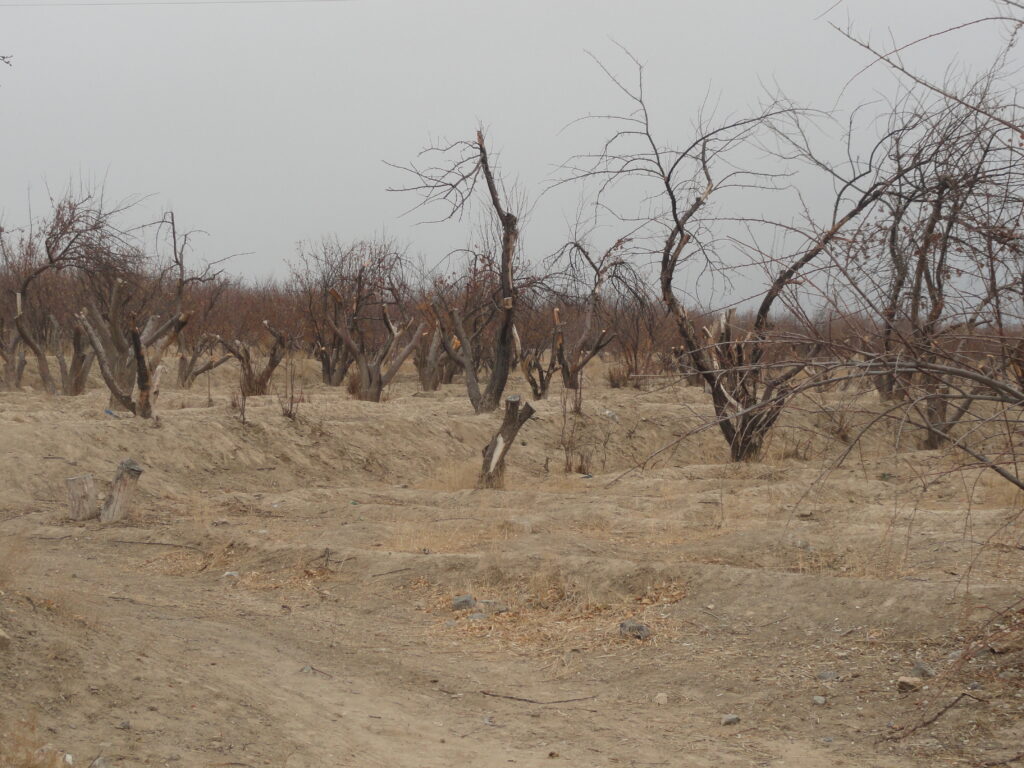Case Studies

COMMUNITY LED RESPONSE TO DISASTERS: A CASE STUDY OF COMMUNITY EMERGENCY REPONSE TEAMS IN LAYYAH DISTRICT
Pakistan is situated on such a part of the globe, where climate changes, in the form of glacial melting, and abnormal intensity, frequency and pattern of rainfall, are unfolding amazingly fast compared with other countries. Being a host to the mighty Indus River, monsoons and westerlies from Mediterranean, a substantial proportion of the population suffers from recurrent floods and billions of dollars loss occurs on account of damage to infrastructure, population displacement, loss of assets and institutions and infrastructure of the poor. For example, due to floods there was a loss of US $ 10 billion in 2010 and US $ 3.7 billion in 2011. Further, the weather has become unpredictable which results in untimely rains inflicting direct loss to agriculture and sustenance of communities. The Judicial Flood Inquiry Tribunal for Floods 2010 concluded that the main causes of devastating damage of 2010 floods were the absence of flood and hill torrent management plans, weak Irrigation and Power Departments, ineffective role of Federal Flood Commission and gross lack of integration and coordination among the key departments dealing with flood.

POVERTY-PROSPERITY-GROUNDWATER MINING-POVERTY
Gul Mohammad from Bangulzai tribe of the Baloch ethnic group is a resident of Dinnar Khan village in Mastung district. His extended household consists of twenty-three people with only three pairs of earning hands. Twenty years ago, this family used to live in Mastung as laborers when they thought of starting agriculture on their ancestral lands. Gul Mohammad sold his motorcycle and shifted to Dinnar Khan with his wife and children. He invested the cash from the sale of motorcycle into land preparation. After an initial good response from his agricultural activity, he called his brother to the village and started on his own lands as well as on the lands of their relatives on tenancy. The high wheat produce and sale of surplus in the market during the first five years motivated his relatives to also shift to the village and start agriculture.
A tubewell was installed in 1993 by the Public Health Engineering Department for drinking water and one of Gul Mohammad’s brothers was employed in it. The villagers also used the water from the tubewell for agriculture. After establishment of orchards, the household started rearing livestock. Gul Mohammad extended credit to his relatives from his increased income which they repaid after getting returns on investment in livestock. Those five years were the best in his life. He spent Rs. 50,000 on his brother’s marriage.
In 1997 the ground water level decreased and the tubewell started operating erratically. The household stopped sowing annual crops to concentrate water on orchards. The tubewell completely dried up in 1998. As a result, all the orchards also dried up. Then the absence of rain did not allow any rainfed wheat cultivation. The livestock population had also dropped significantly due to the non-availability of fodder. The household cut down all their orchards and sold the wood in the market.
From the proceeds of this sale they started a small provision store in the village. During the drought period 1999 and 2000 people could not pay the prices of even household goods and obtained the items on credit from him. This left him with very meager amounts by the end of the month. At the moment he does not save more than 100 or 200 rupees per month from his shop.
Shrinking of production base coupled with large family size has affected health and nutrition of the household members. They have switched to raw sugar (gurr) from white sugar and reduced the consumption of nutrition items. Only two of the children are studying in school now a day. Ref: Social Assessment Study on Water Scarcity in Balochistan, Area Development Program Balochistan, 2000.

PROSPERITY-DROUGHT-POVERTY
Khudai Dad lives in Nali Sir village in Qila Saifullah. He hails from Alizai tribe. His has an extended household of 37 people comprising his mother, four brothers and their wives, twenty-one children including ten boys and eleven girls. This household has been solely dependent on rainfed agriculture and livestock keeping. Because of a joint family, their landholding is larger than other families in the village.
Kudai Dad’s family used to grow wheat, sorghum and pulses on their lands. The annual production used to be quite profitable, as they would sell a sizeable quantity of surplus produce to the shopkeepers in Qila Saifullah town to purchase other items of day-to-day use. Initially, they used oxen to plough their lands. It occurred to Khudai Dad that if they would save some money to purchase a tractor, they would be able to increase the area under cultivation. After discussing the idea with his brothers, they started saving money and bought a tractor in 1994. The arrival of the tractor caused a significant increase in the household income. From the saving of that year, Kudai Dad bought a milling machine and attached it to his tractor. He thought that his mobile mill will cater to the demand of flour milling in Nali Sir as well as the nearby villages and will help him earn additional income. Khudai Dad thus became a small entrepreneur. Soon, this investment started paying dividends and it became a profitable business.
In the harvesting season, Khudai Dad would go to nearby villages and stay there for several days to sell his services as a mobile miller. At that time his monthly income, after deduction of expenditure, used to be in excess of Rs. 22,000 [about USD 440 at that time] per month. In terms of livestock, the household had about four hundred animals. They recall those days as a time of great comfort. They used to enjoy all the amenities, which one can think of in a village. Food items such as milk, ghee, butter, meat and wheat, etc., were available in ample quantity. A lot of money was spent on marriages and other social gatherings. Khudai Dad paid Rs. 150,000 [about USD 3,000] as bride money for his brother. Five of their children were studying in the village school and two in Qila Saifullah town.
The well-being of the family began to be affected with the start of drought in 1998. No crops were produced in the area in 1999, so the milling enterprise came to a halt. Khudai Dad and his brother started working as waged laborers. Two of them are now working in coalmines in Loralai district. One works as a laborer in Qila Saifullah and Khudai Dad himself works as a tenant in vegetable orchards in a faraway village. The payment of wages is also erratic, and they have to go without money for many weeks sometimes. The paucity of income has started showing ill effects on the health and nutrition of the family members. Since the drought has caused a severe decline in the fodder availability, distress sale of some livestock on extremely low prices was followed by malnutrition-induced epidemics in the animals and the flock was largely wiped out. Three of the elder male children were withdrawn from education in 2000 to be employed as laborers.
They term these times as the hardest times of their lives but have not yet considered selling the tractor and the mill. They were waiting for the rains to gather up the shattered pieces of their livelihood. Selling the tractor and the mill will be their last resort. Ref: Social Assessment Study on Water Scarcity in Balochistan, Area Development Program Balochistan, 2000.

